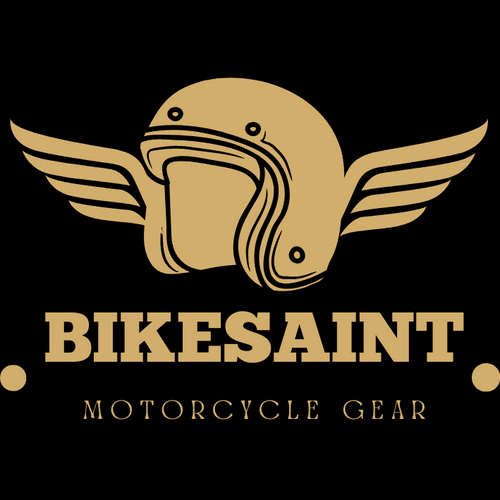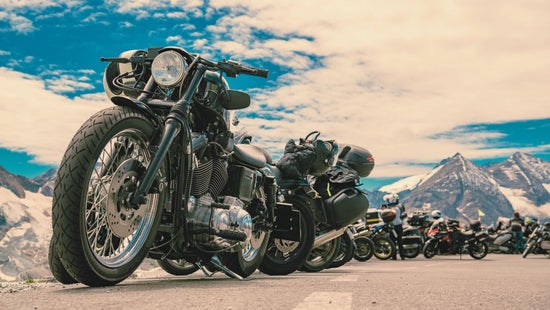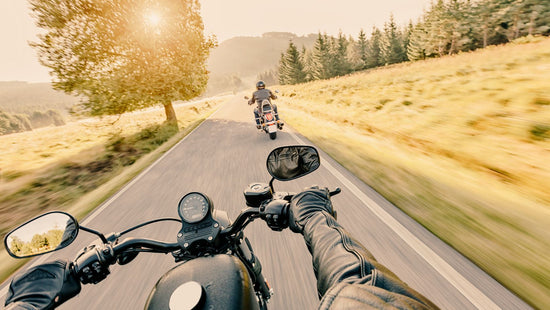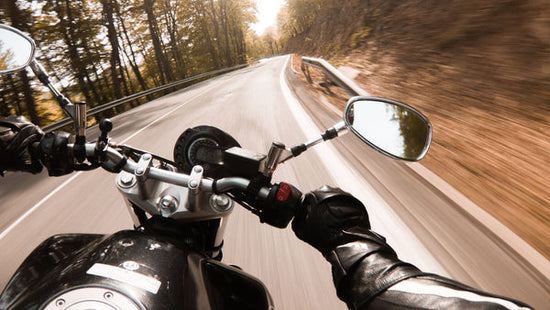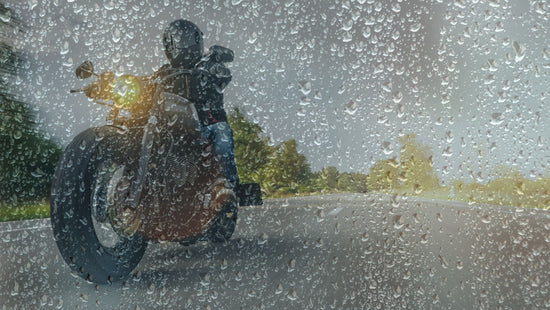

As a beginner motorcyclist, one of the most exhilarating and challenging experiences you'll face is cornering. Mastering the art of cornering on a motorcycle is not only essential for your safety but also for the ultimate riding experience. But it can be daunting, especially if you're new to the game. Fear not, this beginner's guide will take you through the basics of cornering, giving you the tips and tricks you need to improve your cornering skills and become a more confident motorcycle rider.
Introduction
Why is proper cornering important? Most of us ride motorcycles for cornering. It is the most exciting part of riding a motorcycle, feeling the centrifugal force while leaning into the corner. Cornering is one of the most critical aspects of riding a motorcycle. Proper cornering technique not only ensures your safety but also enhances your overall riding experience. Here are some reasons why proper cornering is crucial:
1. Safety: Cornering incorrectly can lead to accidents, injuries, and even fatalities. Proper cornering technique helps you maintain control of the motorcycle and avoid potential hazards.
2. Better handling: When you corner correctly, you can handle your motorcycle more effectively, improving your overall riding experience.
3. Confidence: By mastering proper cornering techniques, you will become a more confident rider, making your rides more enjoyable.
How to Approach a Corner
Importance of speed control
To ride successfully through a corner depends on a large number of variables. It includes your traction, lean angle, your body position, braking and suspension and speed. As a beginner motorbike rider speed is your most important factor, as for higher speed you need to make up generally with more skills. Make sure you approach the corner at a speed that you are confident that you can make the turn. This includes practicing not only your skills but also reading the corners and their radius.
Shifting
Sometimes you will need to shift down before a corner and the engine will help you slow down. Sometimes you are already in the right gear, because you are going slow or the turn is wide enough. The important rule is to have the right gear in before you enter the corner, so you do not have to do any gear changing while in the turn and leaning the motorcycle.
Braking
Similar rule applies to braking. Some experienced riders will argue that trail braking is not only more effective but also safer, as a beginner rider you should do all the braking before the corner, that is before you start leaning your motorcycle.
Take Proper Path though the Corner

Taking a proper path through the corner is a crucial part of cornering. It is also one of the easiest, because it just requires discipline. Many even seasoned motorbike riders get it wrong, but you don't have to and you can make the corners much easier and enjoyable for yourself.
Before entering a corner, you need to position your motorcycle for the turn. If it's a right-hand turn, move all the way to the left side of your lane, if it's a left-hand turn, move to the right side. However always stay in your lane and if there are vehicles approaching from the oposite direction, it is better to compromise on your center position in order to keep safe distance from the cars.
After positioning yourself to the side of your lane, aim to stay there until you see the apex of the corner. Keep the motorcycle straight or in a minimum necessary lean angle and go for the full lean once you see the apex. What this does is it increases the radius of the turn, making it wider and easier to ride through. Also it extends your view into the corner, so you can see better how tight it is and what are the conditions ahead.
Techniques for Effective Cornering
Countersteering
Turning on a motorcycle is leaning. A motorcycle turns through leaning not through turning the handlebars, unless at very low speeds. And in order to lean, you have to countersteer. The most important and effective cornering technique for motorcycles is countersteering. Countersteering is a technique where you push the handlebar in the direction of the turn you want to make. For example, if you want to turn right, you push the handlebar down with your right hand. This movement initiates the turn, and allows you to lean the motorcycle into the turn.
And there is nothing else to it. It is not your body position or legs that initiate the lean, but your hands pushing on the handlebars. If you want to lean more, you simply push down more. This technique has been best explained by Keith Code in his legendary movie Twist of the Wrist 2.
Braking
As mentioned before, it is recommended for beginner motorbike riders to do the braking before the turn. The main reason is that when braking hard, the motorcycle stands up straight and will not lean into the corner. It is not true that you cannot brake in the corner at all. The technique is called trail braking and is used by experienced motorcycle riders to brake later and ride faster. Trail braking means that you start braking later, but very hard, when your motorbike is still straight up. Once you need to start to lean you release the brake, but not fully, since you still need to slow down to make the turn. Of course I am talking about the front brake and this also results in the front suspension compressing and loading on the front wheel, which should result in better traction.
Leaning and body positioning
Now we are getting to the body position and the myth that moving your body turns the motorcycle. I’ve already explained that it doesn’t and that it is your hands and handlebars that are responsible for leaning your motorcycle. However your body position is important, because by shifting your body into the turn, you shift the center of gravity and make up for the centrifugal force. Simply put, cornering is a formula consisting of speed, lean angle and body position. The faster you go, the more you have to lean the motorcycle. The more you shift your body weight into the inside of the turn, the less you need to lean the motorcycle.
Throttle control
Considering you do not use trail braking technique, you should be going through the corner with steady throttle and smoothly accelerate after hitting the apex and exiting the turn.
Safety Tips for Cornering on a Motorcycle

Awareness of road conditions and hazards
is crucial when cornering on a motorcycle. Always scan ahead for any potential hazards like gravel, sand, oil spills or debris on the road. Also be aware of the weather conditions as wet roads can affect your tires’ grip and make cornering more challenging. Another safety tip is to keep a safe distance between you and the vehicle in front of you. This will give you enough time to react in case the vehicle suddenly stops or makes a turn.
Importance of proper gear
This should come as a number one rule for any motorcyclists, beginner or experienced, but unfortunately it doesn’t. A good protective motorcycle gear is the only thing protecting your body from the devastating injuries you can suffer if you get into a motorcycle accident.
Staying relaxed and focused
The focus comes with the territory of riding a motorcycle, but the important part is also staying relaxed. Motorcycle riding is an intense experience, but being stiff will just make your motorbike riding technique so much worse. Remember to breathe deep when you feel you are stiff and loose up your arms and shoulders. Your grip on the handlebars should be light. Do not muscle the motorbike with your arms. It is your legs and core that should keep you on your motorcycle and use your hands just to keep a relaxed grip on the throttle, brake and clutch as well as for countersteering.
Cornering a motorcycle in the rain
The biggest challenge of cornering in the rain is traction. How much traction does a motorcycle really lose in the rain? The critical time should be right after the rain has started, especially if it hasn’t rained in a long time. The problem is not so much the rain, as it is the debris on the road in the form of oil and other substances from vehicles, that will just create a slippery mess. Extra caution is recommended at this time, meaning your work with the throttle should be extra smooth and your lean angles conservative. After this period has passed and it is just water on the road, you should be fine, if your tires have enough tread.
Generally turning on traction control or rain mode that will reduce the power is recommended if your motorcycle is equipped with such functions. I also always focus on being extra smooth on the brakes and throttle and using my upper body to lean into the turns, so I can keep my motorcycle as upright as possible.
Off-street practicing to improve technique
Progress in cornering skills doesn't come cheap. I try to fit in a few minutes every week to practice off the street. An empty parking lot in front of a warehouse or supermarket will do the job. It’s fun and I enjoy it, but mostly it is about my safety. I need to know my motorcycles’ limits and improve mine as a rider. It is mostly about practicing countersteering, lean angles and body position, as your speeds don't require much braking or shifting. In 15 minutes I can do more turns than in a 3 hour trip and in a controlled environment. It builds up confidence, muscle memory and makes me a better rider.
Conclusion
In conclusion, mastering the art of cornering on a motorcycle takes time, patience, and a lot of practice. Remember to start slow and build up your speed gradually, always keeping in mind the importance of proper body positioning and smooth throttle control. Practice off-street to improve your technique and build your confidence in a controlled environment. And don't forget to keep your motorbike well-maintained and equipped with proper tires to ensure maximum traction and safety on the road. With dedication and practice, you can become a skilled and confident rider, enjoying the thrill and freedom of motorcycle cornering while staying safe and in control. Happy riding!
What are the best practices for cornering a motorcycle?
The first and most important rule to remember is to slow down before entering a corner. This will allow you to have more control over your motorbike as you make the turn. You should always check your speed and gear before entering a corner, making sure you are in the correct gear and at a safe speed. The next important technique is to look ahead and through the corner. As you approach a turn, it's crucial to look where you want to go. This will help you anticipate any obstacles or dangers that may be ahead and allow you to plan your line accordingly. Keep your head up, and look as far into the turn as possible. To make the actual turn, use the counter-steering technique. This is where you push on the handlebar in the opposite direction of the turn, causing the motorcycle to lean into the corner. For example, if you want to turn right, push on the left handlebar. Remember to keep your body weight to the inside of the turn and to stay relaxed on the motorbike.
What are the common mistakes made when cornering?
1. Entering the corner too fast: This is probably the most common mistake that new riders make. It's important to approach corners at a speed that you're comfortable with, and not try to take it too fast. You need to be able to control your speed, lean angle, and line through the corner. If you're going too fast, you'll likely run wide or lose control of the motorbike. 2. Target fixation: This is when you focus on something other than where you want to go. For example, if you're approaching a corner and you see a patch of gravel on the road, you might fixate on it, which can cause you to steer towards it. It's important to focus on where you want to go, and let your peripheral vision take care of the rest. 3. Poor body position: Your body position plays a crucial role in how you corner. If you're not positioned correctly, you'll find it difficult to control the motorbike. Your body should be relaxed, with your elbows bent and your head and eyes up.
How can I increase my confidence when cornering?
1. Look where you want to go: The most important aspect of cornering is to look where you want to go. Your eyes play a vital role in your motorbike's direction. Look through the corner, not at it, and focus on the exit point. 2. Position yourself correctly: Positioning yourself is crucial when it comes to cornering. Always use the proper riding position by leaning your body into the corner and keeping your upper body relaxed. Keep your knees close to the fuel tank and your feet on the pegs. 3. Slow down before the corner: Before entering a corner, make sure you slow down. This will give you more control over your motorcycle and also help you to avoid unexpected obstacles. Always remember to brake before the corner, not during it. 4. Apply throttle smoothly: Once you have entered the corner, maintain a steady throttle, and avoid abrupt changes in speed. Applying throttle smoothly will help you maintain control of your motorbike and prevent any sudden jerks. 5. Practice, practice, practice: The key to becoming more confident in cornering is to practice. Find a safe area and practice different types of corners at different speeds. This will help you to understand how your motorbike handles and give you the confidence.
